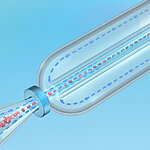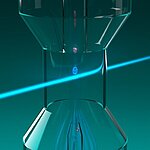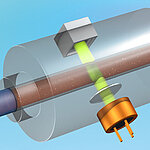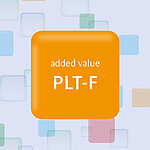Fluorescence flow cytometry (FFC)
Fluorescence flow cytometry (FFC) is used to analyse physiological and chemical properties of cells. It can also be used to analyse other biological particles in urinalysis analysers. It provides:
- Information about cell size and structure
- Information about a cell’s interior
In flow cytometry, we examine cells and particles while they are flowing through a very narrow flow cell.
First a blood sample is aspirated and proportioned, then diluted to a pre-set ratio and labelled with a proprietary fluorescence marker that binds specifically to nucleic acids.
Next the sample is transported into the flow cell. The sample is illuminated by a semiconductor laser beam, which can separate the cells using three different signals:
- forward-scattered light (forward scatter or FSC)
- side-scattered light (side scatter or SSC)
- side-fluorescence light (side fluorescence or SFL).
The intensity of the forward scatter indicates the cell volume. The side scatter provides information about the internal cell structure and its content, such as nucleus and granules. The side fluorescence indicates the amount of nucleic acids present in the cell.
Cells with similar physical and chemical properties form a cluster in a graph known as a scattergram.
The principle of fluorescence flow cytometry is used in different analysers for haematology and urinalysis. For blood cell counts we use fluorescence flow cytometry, e.g. for the WBC and differential, for NRBC counting and reticulocyte measurement.
In urinalysis analysers, fluorescence technology is also used for counting bacteria, red blood cells, white blood cells and other elements.







